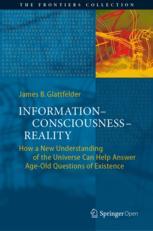All knowledge about the world, including scientific knowledge is gained through correlations. That's all we have. We generate hypotheses based on correlations in incoming information; we test those hypotheses by looking for correlations between the observed and expected results, falsifying them if the results do not correlate with the expected results.Actually that is just correlations.
The issue here is that we have, by definition, no direct access to the correlate, no way of measuring or observing it, except via vague and indirect self-reporting.
There's some ambiguity here - by 'mind', I mean all mental phenomena, conscious or otherwise. As Chalmers himself has said, all mental phenomena bar the subjective experience of consciousness are functionalist notions, open to functionalist solutions, and we already have potential explanatory models for many of them.The activity that goes with a Mind and conscious experience and does not explain the Mind or consciousness itself. This is the Hard Problem of consciousness that mere correlations are inadequate for explaining a theory of Mind.
We also now have tools that enable us to predict, based on brain activity alone, many of the reportable subjective experiences an individual can have in a controlled setting. We also know some of the neural processing well enough that we can describe simple ways of having novel experiences outside the naturally occuring range, e.g. see Paul Churchland's paper on 'Chimerical Colors', which provides more direct evidence of the relationship between neural activity and 'qualia'.
The exception is the Hard Problem, why there is something it is like to be conscious, and I've already explained in various ways why I think the idea of an objective explanation for it is a category error.
It increasingly seems to me that, as Anil Seth suggests, the more we study the neural correlates of subjective experience, the more we will find that they coincide, that qualia and the other abstractions of subjective experience are patterns of neural activity, and the mystery of them will decrease (he makes an analogy with how life has been explained).
The 'Hard Problem' looks amenable to a similar approach, but, ISTM, is likely to remain a brute fact of a certain type of wide-scale neural activity, and is likely to take longer because a subject can only report the presence of subjective experience, not its absence - although even now we can detect conscious awareness in those with 'locked in' syndrome via neurological activity.
No, this is the result of the long tendency to reify poorly understood conceptual abstractions like 'mind' and 'consciousness'. It turns out that the evidence says that they are physical processes, not some kind of 'stuff'; but substance dualism is a stubbornly persistent habit.Its more or less appealing to magic ie physical process produces something non physical without leaving a gap in explaination about how that can happen. How non physical stuff can come from physical stuff.
That's the realm of System 1 (subconscious) thinking. Ideas 'come to mind' and then System 2 thinking (conscious, logical, rational, sequential) vets them for practicality & efficacy.I think its based on imagination. Thinking outside the box and not the rational and logical sequences.
That's the wave function, the mathematical description of a quantum system's state, not the quantum field. But it's generally accepted that what it describes is real even when you don't measure it, because it influences how the system behaves when it isn't being measured (e.g. interference in the double-slit experiment). The particle you detect is just one aspect of a more interesting entity - one that is best explained by quantum field theory.Its actually a mathmatical equation of potentiality and nothing real. Its only real when we measure the particle in its position and all else is made unreal. So before any measurement its all potential and not physical.
Sure, and a particle's spin, charge, and mass are just numbers too - but they are all measures of physical quantities.A quantum field is just a mathematical function that assigns every spacetime point some mathematical quantity. Numbers are clearly not physical objects but are mathematical abstracts.
I guess it's another matter of interpretation - what counts as real? Most of the physicists in the field I read talk in terms of the physical reality of quantum fields, i.e. QFT is a mathematical model that describes physical reality in terms of quantum fields:Quantum field theory is a mathematical model that tries to describe real measured particle interactions, but it would be a leap to declare that the model is the reality. This is the problem when many people say that fields are “fundamental” — they have confused the model with reality. In every single experiment done, we see particles interacting (or not) with each other. We never see some visible fluctuation that we call a field. The field just serves the describe the interactions of these particles.
https://medium.com/@thisscience1/quantum-fields-dont-exist-5a11baf9cebc
“Particles are not objects that are there forever, it’s a dance of fields.” David Tong, Professor of Theoretical Physics, University of Cambridge
The Mystery at the Heart of Physics
Well, yes - I tried to explain my view on this several times already - I agree with Chalmers on the Hard Problem (though not with the implicit dualism of his 'philosophical zombie' idea).Well one would be from Chalmers and the Hard problem of consciousness showing that the physical correlates of consciouness in the brain are inadequate for explaining a theory of consciousness. Correlations tell us what the brain does when conscious and not what consciousness is.
FACING UP TO THE PROBLEM OF CONSCIOUSNESS
The Conscious Mind: In Search of a Fundamental Theory (Philosophy of Mind)

David J. Chalmers, The Conscious Mind: In Search of a Fundamental Theory - PhilPapers
The book is an extended study of the problem of consciousness. After setting up the problem, I argue that reductive explanation of consciousness is impossible , and that if one takes ...philpapers.org
I have to admit to bias here - that anything associated with Deepak Chopra is likely to be attention and/or money seeking woo. But I have no argument with the claim that we can "change the neural patterns linked with conditions such as depression, addictions", or that mental "healing, inspiration, insight, self-awareness, discovery, curiosity, and quantum leaps in personal growth" are possible (although whether buying Chopra's books or courses will get you there is another matter), but that doesn't require that 'psi-phenomena' or NDE's are physically real, and Hoffman's quite reasonable analogy for consciousness doesn't require or imply that 'consciousness is fundamental'.
I give short shrift to exotic claims unsupported by reliable evidence.
Yeah, been there, studied that. The only large-scale, well-controlled scientific studies of NDEs were Sam Parnia's AWARE I & AWARE II, neither of which supported his original anticipation of scientific validation of paranormal OBE experiences, which he dropped completely from his published reports.The second would be from paranormal research like NDE. Thee are 1,000s of first hand testimony of NDE and other out of body experiences many verified that cannot be explained by science. But the weight of experiences and their consistency by age, culture, and elements of experience is itself evidence.
“Reality” of near-death-experience memories: evidence from a psychodynamic and electrophysiological integrated study
Frontiers | “Reality” of near-death-experience memories: evidence from a psychodynamic and electrophysiological integrated study
Multiple lines of evidence point to the conclusion that near-death experiences are medically inexplicable and cannot be explained by known physical brain function.
Near-Death Experiences Evidence for Their Reality
Near-Death Experiences Evidence for Their Reality
Leaving aside the 6378 ranking of the Frontiers of Human Neuroscience journal, the linked paper only concludes:
"NDE memories cannot be considered equivalent to imagined memories, and at a neural level, NDE memories are stored as episodic memories of events experienced in a peculiar state of consciousness."
IOW, they seem real to the subject, and they are memories of events in a peculiar state of consciousness - presumably that would be due to being near death (trauma, shock, hypoxia, physiological collapse, etc).
Pim van Lommel's work is widely acknowledged to be poor science, arguably pseudoscience.
Retrospective, anecdotal, and self-reported NDE's are, like so many other paranormal stories, generally unreliable, for reasons I'm happy to explain if you wish.
T.B.C.
Upvote
0





